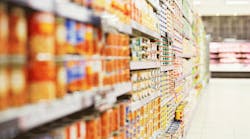It used to be that packaging alone could change consumer preferences around food and beverage purchases, but the equation has flipped: Now, consumers drive changes in packaging. Increased travel, busier lifestyles and improved information around health and nutrition have increased demand for indulgent yet healthy foods, convenience foods, single-serve options and sometimes, completely new foods. This push, in turn, creates a need for specific—and in some cases, specialized packaging equipment.
Tuna fish, for example, spent nearly a century in the traditional can before a move to stand-up pouches offered portability and customer convenience. That transition required a move from canning equipment to premade pouching and form/fill/seal pouching machinery. Recently, Chicken of the Sea added another new package to the portfolio with resealable and recyclable plastic tubs, complete with a fork in the lid. Aimed at on-the-go, healthy lifestyles, the Infusions’ line created a need for an entirely different type of packaging line built around filling and sealing polypropylene containers.
Here are some of the trends we see at PMMI:
1. Versatility With capital cost a constant concern, packaging equipment needs to produce a wide variety of sizes, shapes, portions and styles, while accommodating single-serve, multi-serve and bulk packaging for different retailers. This positions flexibility in packaging machinery as the top trend in packaging in 2019 and going forward.
2. Shorter Changeovers Versatile equipment is so crucial, that for the first time many packagers of food and beverage now prioritize shorter changeover times over speed of throughput in machine-design selection. As much product as fast as possible is taking a backseat to as many different products as possible from the same piece of equipment.
3. Interactive Packaging QR codes, for example, may finally be finding their niche with millennials after several false starts with baby boomers and Generation X. Consumers relish the ability to scan with their smartphones and receive detailed information on product origin, ingredients, expiration date, recycling information, etc. Augmented reality serves a similar role, offering the consumer information about the product they may not get otherwise, like showing the actual farms and orchards products originated from.
4. Cleanable Robots With strict health and safety regulations, food and beverage processors and the companies tasked with packaging food for retail typically limited robotic use to putting packaged goods on a pallet before shipping out the door to the Walmart, Costco and Krogers of the world. Times are changing, however, as robot manufacturers are increasingly developing robots suitable not only for handling unpacked goods but also for the subsequent washdown machinery that must undergo to maintain a bacteria-free environment safe for food and beverage. Cleanable robots physically able to handle food and beverage products are creating new opportunities for the direct and indirect handling of food and beverage.
IHS Market projects a cumulative average annual growth rate of almost 30% for the five years ending in 2020 for robots sold into the food, beverage and personal care industry. The brand-new Robotics – Implementation 2 Innovation report from PMMI, The Association for Packaging and Processing Technologies, reveals that 88% of the end users who participated use robotics somewhere in operations.
5. The e-Commerce Connection Since the point of sale is on a digital device rather than in store, the consumer replaces the retailer as the focal point of the supply chain, requiring a far more complex process to deliver packaged food products. On a retail shelf, a package may have been handled a dozen times, while a product in the e-commerce channel will likely see between 20 and 30 touches before it reaches the consumer. Online shopping flips the packaging model on its head as primary, secondary and tertiary packaging now take on differing levels of importance.
Sean Riley is senior director, media and industry communications, at PMMI, the Association for Packaging and Processing Technologies.



